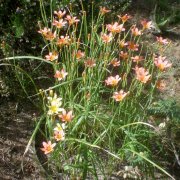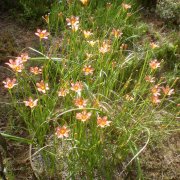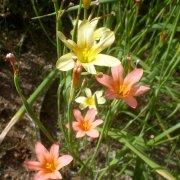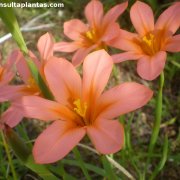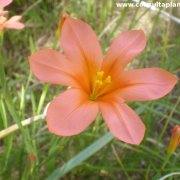Care of the bulbous plant Moraea ochroleuca or Apricot Tulip |
|
The genus Moraea, family Iridaceae, comprises 40 species of bulbous and tuberous plants native to Africa and Australia. Some species are: Moraea ochroleuca, Moraea polystachya, Moraea sulphurea, Moraea ciliata, Moraea pavonia, Moraea edulis, Moraea glaucopsis. Common names: Apricot tulip, Cape tulip. Scientific synonym: Homeria ochroleuca. This species is native to the northwest and the southwest Cape, South Africa. They are plants with bulbs (they are actually corms) that reach 60 cm (232.6") in height. They have 1-2 light green ribbed linear leaves. The abundant flowers last a few days but do not stop sprouting; They can be yellow, orange, salmon, or various colors. Bloom from mid-summer to early fall. Apricot Tulip is used in pots and planters, in rockeries, on sunny slopes and to form groups together with other bulbous plants. Moraea ochroleuca grows in full sun or semi-shade exposure. In winter it resists the cold up to 5 ºC (41 ºF). The soil should have an excellent drainage for which we can use 1/3 of commercial potting substrate and 2/3 of coarse siliceous sand. Always water moderately, waiting until the substrate has completely dried. When the leaves dry, stop watering. Fertilize once in spring with slow release mineral fertilizer. Cape tulip does not require pruning. Moraea ochroleuca is a plant resistant to pests and diseases but sensitive to excess watering; it can be attacked by mites in poorly ventilated greenhouses. Apricot Tulip propagates from seeds sown in spring or fall. |
Images of the bulbous plant Moraea ochroleuca or Apricot Tulip |
Find plants
Moraea ochroleuca or Apricot Tulip | Care and Growing
© 2025 FavThemes
